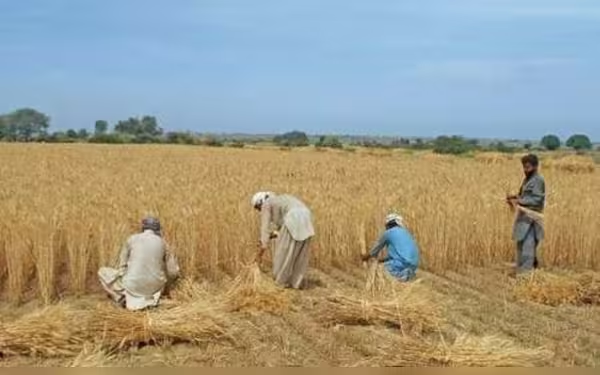Friday, October 4, 2024 09:19 AM
Rabi Crop Outlook Boosted by Increased Water Availability in Pakistan
- Water availability exceeds 10-year average for Rabi season.
- Farmers face challenges from last year's low wheat prices.
- Government must support farmers to restore confidence in wheat cultivation.
 Image Credits: dawn
Image Credits: dawnIncreased water availability for Rabi season raises hopes for wheat crop, but farmers face challenges from previous year's low prices.
Water is a vital resource for agriculture, especially in a country like Pakistan, where farming is a significant part of the economy. As the Rabi season approaches, which runs from October to March, the availability of water becomes crucial for farmers who rely on it to grow their crops. This year, the situation looks promising, with water availability expected to be slightly higher than the 10-year average and about 15% more than last year. This increase raises hopes for a better crop output, particularly for wheat, which is the main staple of the country.
However, the journey to a successful Rabi season is not without its challenges. Last year, many farmers faced tough conditions due to the government's inability to provide the promised support price for wheat during the peak harvesting period. This left them in a difficult position, forcing them to sell their produce at very low prices to opportunistic market players. As a result, convincing farmers to return to wheat cultivation this season may prove to be a daunting task.
The Indus River System Authority (Irsa) recently held a meeting where they discussed the anticipated water availability for the upcoming Rabi season. They reported that the expected water availability at the four rim-stations is around 21.98 million acre-feet (MAF), which is about 15% more than last year and slightly above the 10-year average. This means that the total water availability in the entire Indus Basin is estimated to be 31.14 MAF, including 10.57 MAF of carryover storage in reservoirs as of October 1.
Despite this positive outlook, there are still concerns regarding water distribution among the provinces. The approved basin-wise shortage for Rabi 2024-25 stands at 16%, which means that Punjab and Sindh, the two main agricultural regions, will receive 29.26 MAF—16% less than what was promised in the 1991 Water Apportionment Accord. This discrepancy could further complicate efforts to encourage farmers to plant wheat.
Moreover, the Irsa committee has approved anticipated losses in the Indus and Jhelum-Chashma Zones, which will be reviewed at the end of October 2024. The meeting also allowed provinces to request supplies for crop maturity and sowing of Rabi crops in October, which will later be adjusted against their overall shares for the season.
As the Rabi season begins, the provincial shares have been set at 16.68 MAF for Punjab, 12.58 MAF for Sindh, 0.70 MAF for Khyber Pakhtunkhwa, and 1.17 MAF for Balochistan. While the water availability looks promising, the real test will be whether farmers can be motivated to grow wheat again after last year's challenges. The government must take proactive steps to ensure that farmers feel supported and secure in their decisions to plant crops.
While the increase in water availability for the Rabi season is encouraging, it is essential for the government to address the concerns of farmers who have been affected by previous policies. By fostering a supportive environment and ensuring fair prices, the government can help restore farmers' confidence in wheat cultivation, ultimately leading to a more prosperous agricultural sector in Pakistan.













